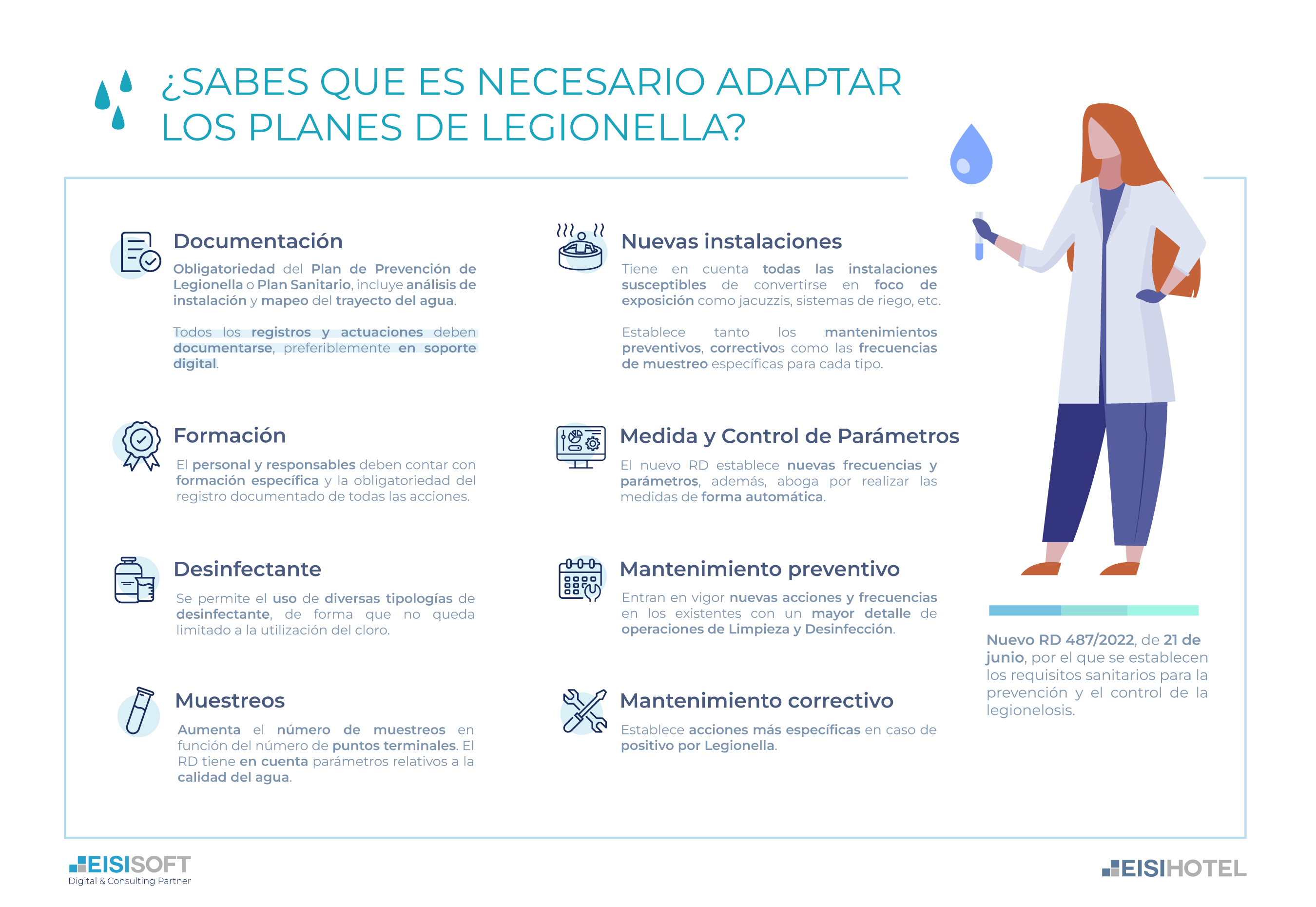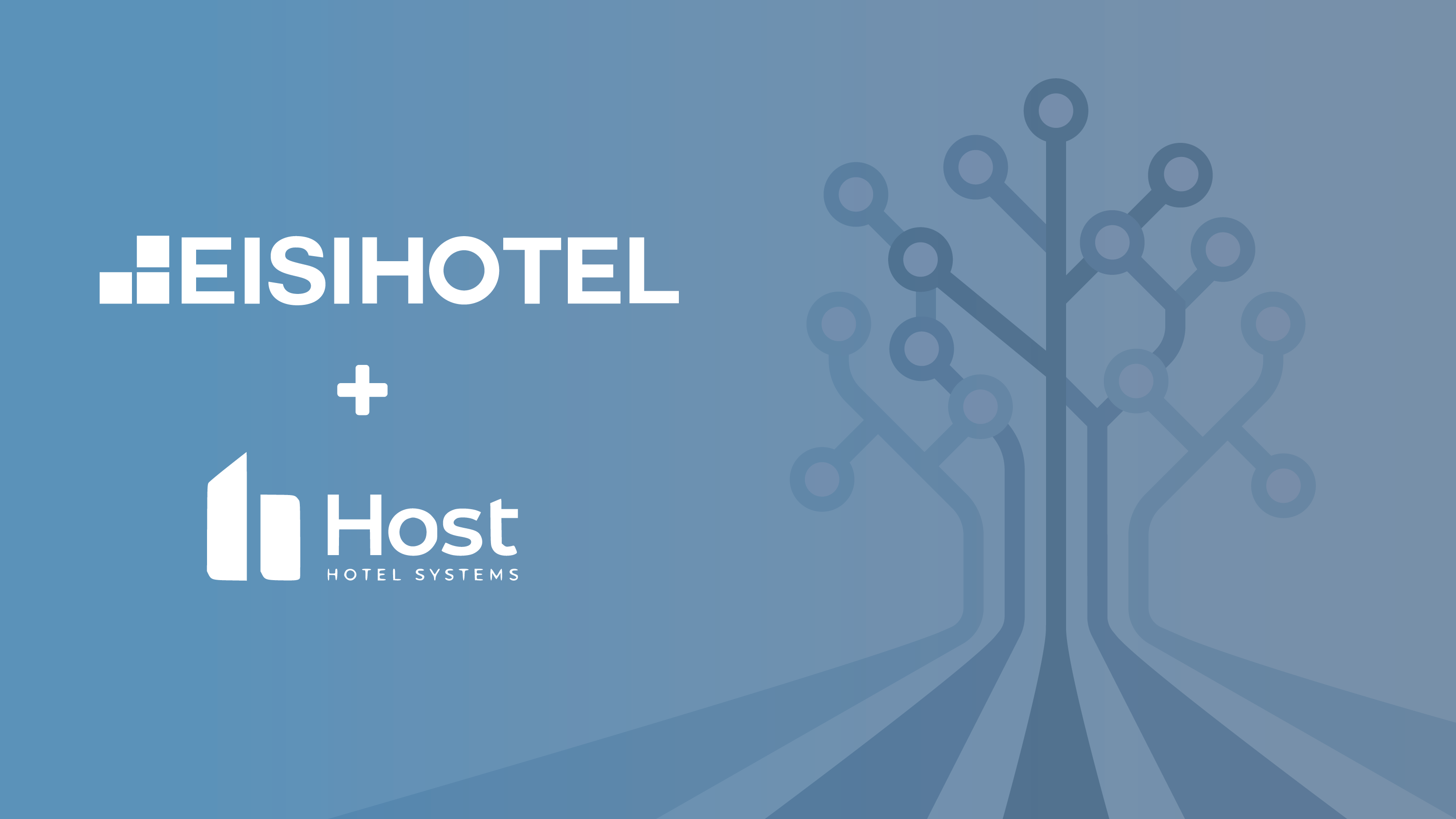
Evolution in Legionella Prevention: Analysis of RD 487/2022
2023-11-14 10:00:00
New RD 487/2022, of June 21, establishing health requirements for the prevention and control of legionellosis.
Legionellosis is a bacterial disease of environmental origin that usually presents in two distinct clinical forms: pulmonary infection or "Legionnaires' Disease," characterized by pneumonia with high fever, and the non-pneumonic form, known as "Pontiac Fever," which manifests as an acute febrile syndrome with a mild prognosis. In both situations, it can present as outbreaks or isolated or sporadic cases.
In a step to safeguard public health, the new Royal Decree 487/2022, of June 21, has marked an essential update in the measures for the prevention and control of legionellosis outlined in RD 865/2003, of July 4. This regulatory change responds to the evolution in scientific-technical knowledge, the accumulated experience in both regulatory application and the results of epidemiological and environmental studies of cases and outbreaks in recent years.
With the approval of this regulation, technical improvements, new risk management measures, and essential innovations are incorporated to achieve more effective control of installations or equipment prone to risks.
Main Changes
The previous regulation (RD 865/2003, of July 4) presented significant challenges, such as limited representation in analyses, insufficient risk assessment in installations, and low quality of laboratory analyses.
The new regulation covers aspects not considered in its predecessor, in addition to delving much deeper into certain points that were already contemplated in the previous version. Some of the most relevant changes to note in the new RD 487/2022, of June 21:
1- Documentation: It is crucial that all establishments have a Legionella Prevention and Control Plan or a Sanitary Plan, both supported by a thorough analysis of the installation. This comprehensive approach not only requires the creation of preventive strategies but also the implementation of maintenance, sampling, and analysis programs. Emphasis is placed on preferably digital or electronic records, providing an efficient and accessible platform for managing and monitoring these activities transparently and effectively.
2- Training: The Royal Decree establishes specialized training as a requirement for the personnel and those responsible involved. This provision underscores the importance of acquiring specific knowledge and practical skills to effectively address the responsibilities associated with the prevention and control of legionellosis.
3- Disinfectant: The new regulatory framework introduces significant flexibility in the use of disinfectants, as it does not exclusively reference chlorine. This measure broadens the available options for disinfection, allowing for the adoption of more adaptable approaches tailored to the specific characteristics of each installation.
4- Sampling: Regarding sampling, it proposes a significant increase in sampling frequency, focusing particularly on terminal points. This more frequent and detailed approach allows for a more precise and timely evaluation of hygienic conditions, enhancing the capability for early detection of potential risks associated with Legionella. Additionally, a more comprehensive consideration of water quality parameters is introduced, broadening the sampling perspective to address not only the presence of Legionella but also other key indicators of water health.
5- New Installations: It significantly expands to include additional categories such as jacuzzis and water play areas within the scope of consideration. Additionally, clear maintenance guidelines are established, defining specific frequencies tailored to the particularities of each type of installation.
6- Measurement and Control of Parameters: The implementation of automation in measurement is prominently promoted. This advanced approach not only streamlines the monitoring process but also enhances the precision and consistency in the collection of essential data. Automation represents not only a technological advancement but also a strategic strategy to improve operational efficiency and response capability to potential challenges. By promoting this automation, the regulation aims not only to ensure regulatory compliance but also to encourage the adoption of innovative technologies that contribute to a more proactive and effective approach in managing Legionella prevention.
7- Preventive Maintenance: In the realm of preventive maintenance, the regulation introduces a series of additional actions and detailed frequencies to strengthen the effectiveness of preventive practices. This more comprehensive approach translates into a greater focus on anticipating potential risks, incorporating specific measures designed to address various contingencies. Additionally, the importance of Cleaning and Disinfection (C+D) operations is highlighted, emphasizing their crucial role in preventing the proliferation of Legionella.
8- Corrective Maintenance: In the realm of corrective maintenance, it clearly establishes specific actions to be taken once the presence of Legionella is confirmed. This post-confirmation precision not only speeds up the response to critical situations but also effectively guides the necessary corrective measures. By specifying the actions to be taken in detail, the regulation aims to minimize the risk of spread and reiterate the commitment to a rapid and efficient response to the detection of Legionella. This rigorous approach reflects the importance of promptness and effectiveness in corrective actions, thereby strengthening the comprehensive control and management capacity in dealing with legionellosis.
Special Mention of Responsibilities
From the perspective of the Installation Owner, they assume the role of ultimate responsible party, even in cases where management is outsourced. This designation reflects the importance of the owner's direct oversight, who maintains the ultimate responsibility for the effective implementation of preventive measures.
On the other hand, the Technical Manager of the LPCC (Legionella Prevention and Control Plan) plays a key role. This individual is responsible for developing, implementing, and evaluating the plan, ensuring comprehensive and effective management of preventive strategies. Their role spans from conception to continuous evaluation, ensuring the plan's adaptability and effectiveness in response to potential changes and challenges.
In terms of deadlines, the regulation stipulates that the completion of the LPCC or LSP (Legionella Sanitary Plan) must be accomplished within one year of its entry into force, with a deadline before January 2, 2024. This temporal specification highlights the urgency and necessity for the timely implementation of preventive measures, emphasizing the importance of promptness in adapting to new regulatory standards.
In Summary
This new regulatory framework is established with the mission of reinforcing preventive measures, ensuring the comprehensive safety of installations against the persistent threat of Legionella. Its focus is oriented towards protecting public health and general well-being while establishing more rigorous and updated guidelines to address emerging challenges in the prevention field. This regulation represents a significant advancement for the health and well-being of those interacting with these installations.
Discover how our Legionella Prevention module can become your strategic ally in efficiently managing the hygienic-sanitary measures of your establishment. Get detailed information about our Legionella module.
References:
https://www.boe.es/buscar/doc.php?id=BOE-A-2022-10297



